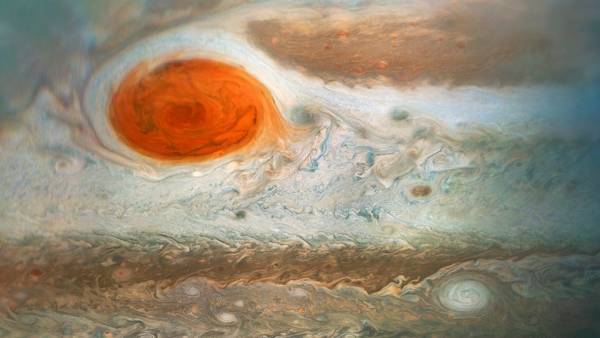
Scientists from The Scripps Institute of Oceanography at the University of California, San Diego, carefully studied the images of Jupiter taken by NASA’s Juno probe and noticed that cyclones in the dense atmosphere of the gas giant are similar to ocean vortices occurring on Earth.
The lead author of the study, oceanographer physicist Leah Sigelman, together with colleagues analyzed an array of infrared images depicting the northern polar region of Jupiter with a cluster of polar vortices, and created a model of the formation of cyclones.
By tracking the movement of clouds between the images, the researchers were able to calculate the wind speed and direction. The team then interpreted the infrared images in terms of cloud thickness. It turned out that the hot regions visible in the images correspond to thin clouds through which you can look deeper into the atmosphere of Jupiter, and the cold regions represent a dense cloud cover.
These results gave the researchers a clue to the movement of energy flows in the atmosphere of the gas giant. The model showed that the rapidly rising air inside the clouds acts as an energy source that fuels large vortices and large circumpolar and polar cyclones.
The researchers note that understanding the energy system of Jupiter can help to understand the physical mechanisms operating on our planet, and identify some “energy routes” that may also exist on Earth.
Winter liquidation of goods takes place on AliExpress: discounts up to -80%
Ekaterina Gura